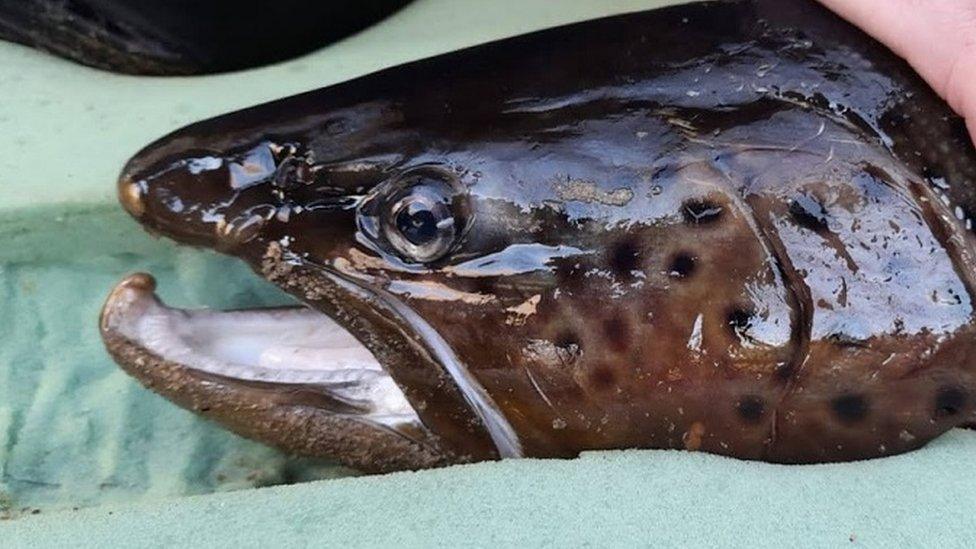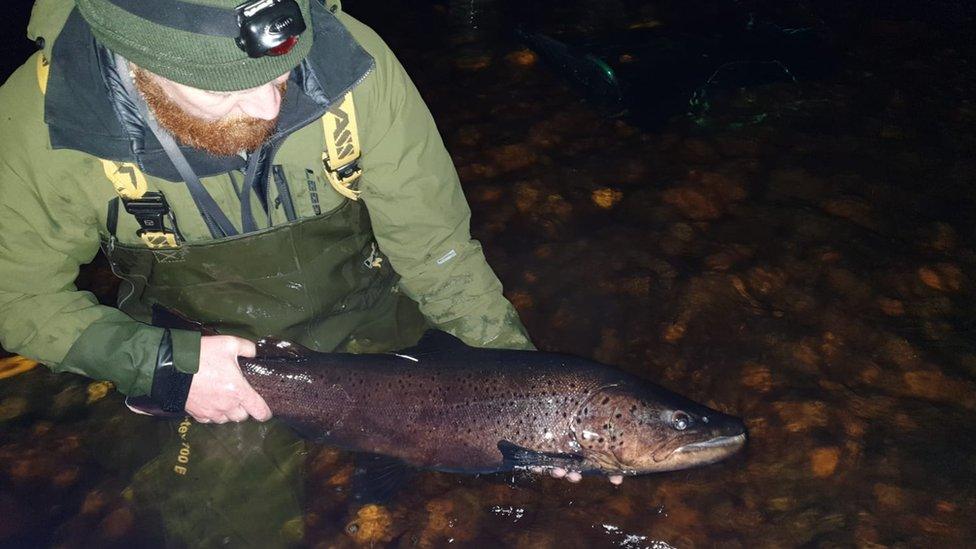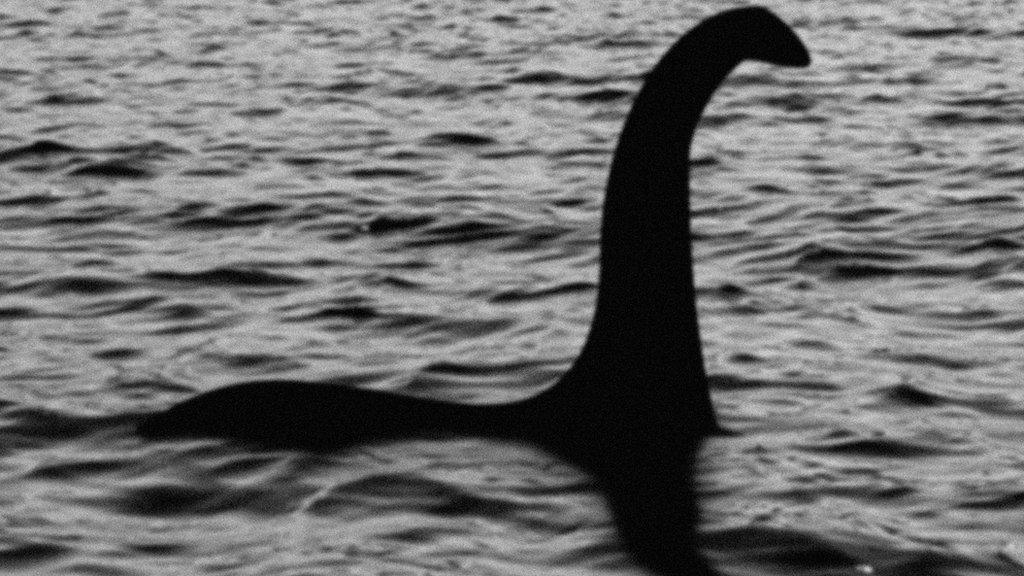Keeping tabs on a real Loch Ness 'monster'
- Published

Ferox grow larger than other trout
A giant predatory type of trout that lurks at the bottom of Loch Ness is being tracked electronically.
The elusive ferox brown trout are being fitted with acoustic tags which send out a high frequency "ping" to a mobile receiver.
The tagged fish include one of the largest ferox trout to have been found in the loch.
The 84cm (2ft 9ins) long fish which weighs 7kg (16lb) has been nicknamed Brutus by the project team.
Ness District Salmon Fishery Board and University of Glasgow's Centre for Ecology and the Natural Environment are working on the study.
Ferox trout are found Scotland's largest lochs, diving to 30m (98ft) to find their prey, and are usually only seen when they appear in rivers to spawn.
They mostly hunt Arctic charr, a freshwater fish that colonised lochs after the last ice age.

Fishery board river director Chris Conroy and Brutus
Ferox trout often mature at a much older age than other trout, allowing them to increase significantly in size before they divert their energy into spawning.
They feed almost exclusively on fish, while other trout will eat insects and other fish if they get the chance.
Ferox can live for as long as 20 years, with the oldest on record being a 23-year-old fish from Loch Killin, a tributary of Loch Ness near Whitebridge.
'Vital step'
Chris Conroy, river director of the Ness Board, said: "Brutus is easily the largest example we've found, he's a real monster of a fish, about 12-years old and in his prime."
Dr Matt Newton, of the University of Glasgow, said the use of the tagging technology was providing a "glimpse" of what the fish were doing beneath the loch.
Allow X content?
This article contains content provided by X. We ask for your permission before anything is loaded, as they may be using cookies and other technologies. You may want to read X’s cookie policy, external and privacy policy, external before accepting. To view this content choose ‘accept and continue’.
He said: "We will be able to determine the amount of movement these fish are exhibiting, habitat preferences and potential social interactions which are vital in developing management and protection strategies for such fish.
"These fish are fairly rare. Getting an initial understanding of their behaviour is a vital step in progressing future research."
- Published5 September 2019
